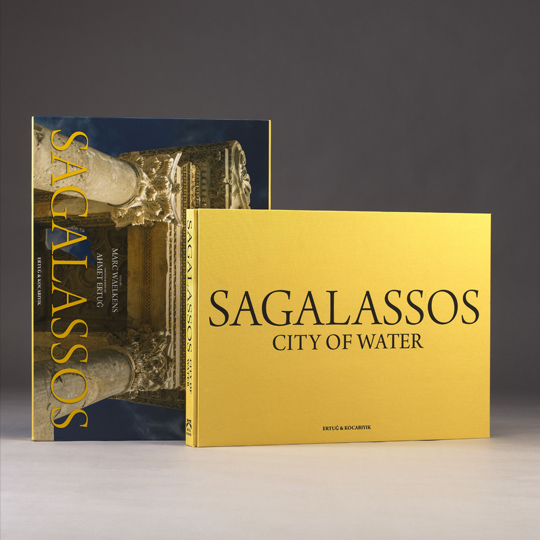Sagalassos
Sagalassos: City of Water Extending over the mountainous terrain of Aglasun Mountain in southern Turkey (approx. 150 km north of Antalya) at an elevation of 2045 m, the city of Sagalassos, which once belonged to the ancient region of Pisidia, enjoyed natural protection due to its prominent location. This elevated site was also well-provided with natural spring water, making it an ideal choice for settlement. The city, which was probably initially inhabited in the 5th c BC, is first mentioned historically in connection with the campaigns of Alexander the Great, who defeated the Sagalassians in 333 BC. In the 2nd c AD in particular, Sagalassos experienced an enormous increase in prosperity, coinciding with the Emperor Hadrian’s selection of the city as the centre of the Pisidian Imperial cult. First rediscovered by a French traveller in 1706, Sagalassos was visited by a number of Western explorers throughout the 18th and 19th centuries. Exploratory excavation began in 1987, culminating in an intensive excavation campaign at Sagalassos initiated in 1993 under the direction of the Belgian archaeologist Marc Waelkens. Two decades later, enough has been uncovered to reveal that the city was a jewel not only amongst the Pisidian cities but also in Asia Minor in general. The city boasted all necessary urban infrastructures – a monumental, although unfinished theatre, a stadium, numerous nymphaea, a library, temples to pagan gods and to the Imperial cult, vast public spaces for commercial and ceremonial purposes, and residential areas. The city also attracted an active artistic community, including sculptors, architects and potters. Sculptors, including representatives of the important marble-producing site of Dokimeion, produced statues and portraits of local benefactors, divinities, and members of the Imperial family, and numerous funerary monuments; architects and architectural sculptors created structures which could easily compete in beauty, majesty and crispness of detail with those from other more well-known sites such as Ephesos; while potters’ workshops, exploiting local clay beds, created a widely exported local ceramic ware. Excavations have also shed light on the history of the city in Late Antiquity and beyond, indicating that, in spite of repeated earthquakes, the city continued to be inhabited probably until the late 11th c AD, undergoing the transformation into a Christian city. The architectural splendours – some of which have been reconstructed – and the sculptural treasures are the focus of the new book, “Sagalassos: City of Water.” Lavishly illustrated with 99 splendid plates by Ahmet Ertug, the book provides an overview of the ancient history, architecture, sculpture, and pottery of the site, as well as the history of its discovery and subsequent exploration. The texts, written by leading scholars in the field, are accessible both to the non-specialist and to the professional, while the illustrations, ranging from breath-taking panoramic overviews of the landscape to minute details of sculptural elements, reinforce Sagalassos’ claim to have been one of the leading cities of Asia Minor. The book provides an exemplary overview of the site and its monuments.

Sagalassos: City of Water
Authors: Marc Waelkens, Semra Mägele, Jeroen Poblome
Photography: Ahmet Ertuğ
2013
English
34x47 cm
208 pages. 99 full-colour plates and additional plans
Printed in Germany and hand-bound in Switzerland, the volume is presented in a slipcase.








